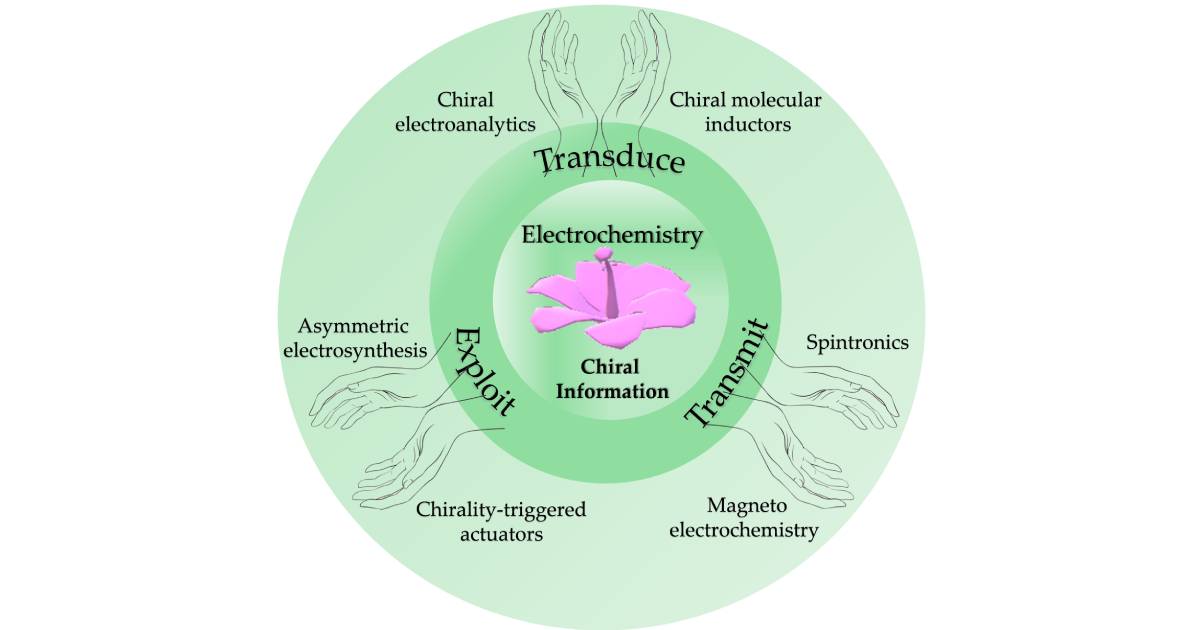Chiral Materials in Electrochemistry: Different Ways to Transduce, Transmit and Exploit Chiral Information
A special issue of Applied Sciences (ISSN 2076-3417). This special issue belongs to the section "Materials Science and Engineering".
Deadline for manuscript submissions: closed (25 December 2022) | Viewed by 3420

Special Issue Editors
Interests: electrochemistry; conductive polymers; chiral molecular materials; solar energy devices; photoelectrochemistry; polymeric coatings; sustainable materials; electrolytic plasma; corrosion science; recovery and remediation processes
Special Issues, Collections and Topics in MDPI journals
Interests: electrochemistry; electroanalysis; bipolar electrochemistry; conductive polymers; chiral materials; (chiral) ionic liquids; (chiral) deep eutectic solvents
Special Issues, Collections and Topics in MDPI journals
Special Issue Information
Dear Colleagues,
It is with great pleasure we present you the Special Issue entitled “Chiral materials in electrochemistry: different ways to transduce, transmit and exploit chiral information”. Which better year for the launch of this Issue than this one, which has seen worldwide recognition of the importance of chirality with the attribution of the Nobel Prize in Chemistry 2021 to Benjamin List and David MacMillan for the development of the asymmetric organocatalysis?
This Special Issue aims to collect both research and review articles that focus on the amazing combination of chiral substances (molecules or materials) with electrochemistry. This combination generates a plethora of applications invariably based on the transmission of chirality throughtout different dimensional scales, from the nano- or microscopic level (e.g., the analytical recognition of antipodes, asymmetric synthesis and spintronics) to the macroscopic scale (e.g., the movement of small objects).
We hope this Special Issue can represent a valuable reference platform for the many researchers (even from the branch of physics) working in the fascinating world of chiral electrochemistry and that, at the same time, the collected articles can inspire even more groundbreaking studies in this field, whose potentialities have only been marginally exploited.
Dr. Mirko Magni
Dr. Serena Arnaboldi
Guest Editors
Manuscript Submission Information
Manuscripts should be submitted online at www.mdpi.com by registering and logging in to this website. Once you are registered, click here to go to the submission form. Manuscripts can be submitted until the deadline. All submissions that pass pre-check are peer-reviewed. Accepted papers will be published continuously in the journal (as soon as accepted) and will be listed together on the special issue website. Research articles, review articles as well as short communications are invited. For planned papers, a title and short abstract (about 100 words) can be sent to the Editorial Office for announcement on this website.
Submitted manuscripts should not have been published previously, nor be under consideration for publication elsewhere (except conference proceedings papers). All manuscripts are thoroughly refereed through a single-blind peer-review process. A guide for authors and other relevant information for submission of manuscripts is available on the Instructions for Authors page. Applied Sciences is an international peer-reviewed open access semimonthly journal published by MDPI.
Please visit the Instructions for Authors page before submitting a manuscript. The Article Processing Charge (APC) for publication in this open access journal is 2400 CHF (Swiss Francs). Submitted papers should be well formatted and use good English. Authors may use MDPI's English editing service prior to publication or during author revisions.
Keywords
- chiral electrode surfaces (metals, composites, polymers, etc.)
- chiral molecular inductors (catalysts, biocatalysts, redox mediators, additives, supporting electrolytes, solvents, etc.)
- chiral thin films
- chiral electroanalytics
- asymmetric electrosynthesis
- asymmetric bipolar electrochemistry
- chiral electromechanical actuators
- spintronics
- spin filtering
- spin-dependent electrochemistry
- magnetoelectrochemistry






